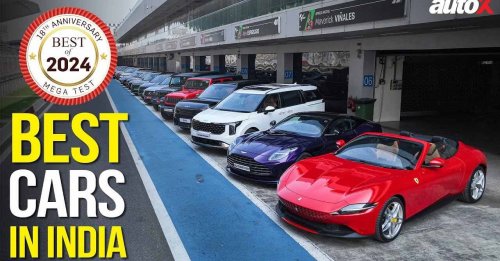The Roma marks a true distinction between the GTs and sports cars from Maranello. Inspired by the Eternal City, it represents an unprecedented search for stylistic purity.
When Anita Ekberg asked Marcello Mastroianni to join her in the water of the Trevi Fountain and said the words, ‘Come here, hurry up,’ it became an iconic moment in the history of cinema. Yes, I am talking about La Dolce Vita, a 1960 film by Federico Fellini. An image of Rome in its full cultural ferment, devoted to beauty, luxury, and pleasure, as experienced by an international jet set.
And, in those curious moments in the film, Ekberg’s voluptuous body was covered in dresses designed by the Fontana sisters, who were from Traversetolo – a stone’s throw from Maranello. Their atelier in Piazza di Spagna, a few metres from the steps of Trinità dei Monti, was more or less solely responsible for dressing the entire La Dolce Vita era in elegance, not unlike what Ferrari wants to do with the Roma – an archetype of a new way of conceiving GT cars aimed at achieving absolute cleanliness of form.
Sergio Marchionne was one of the main proponents of this idea that aspires to make GTs once again essential and elegant.
A Remarkable Year
The Roma, which was launched in the capital city of Rome, is also the epilogue to what can only be considered as a remarkable year for the Prancing Horse – a year that was marked by a leap into the future with the SF90 Stradale, the first plug-in hybrid, a long-awaited return to the past with the 812 GTS, and a confirmation of the present, with the F8 Tributo and the Spider.
The Roma ‘was created to explicitly clarify the difference between a GT, the category to which it belongs, and a sportscar,’ explains Flavio Manzoni, Ferrari Design Director. ‘Its GT design is clean, without any technical and aerodynamic features that would compromise its purity. Sports cars, on the other hand, are more extreme and ostentatious. And we wanted to avoid contaminating the two categories.’
Essentially, it presents a harmony of features and intentions that has its conceptual roots in the carefree Rome of the 50s and 60s. But, at the same time, it also draws on the golden legacy of automotive jewels, such as the 250 GT Berlinetta Lusso and the 250 GT 2+2, which seem to inspire its harmonious proportions and overall profile.
Its sleek silhouette runs in a single line, with the fastback volume of the cabin tapering towards the tail. The surfaces further the cause of minimalism – they are smooth and devoid of any possible element that could disturb its harmony. And it’s in this context one should look at, and interpret, the perforated surface that replaces the classic radiator grille and the light clusters.
‘The shark-like snout emphasises the forward propensity of the front,’ says Manzoni. He continues, ‘Part of the elegance of the Roma lies in concealing the front within a full, albeit perforated, volume.’ This is something that’s causing a lot of discussions, and on which, designers and engineers had to struggle to make it functional for the cooling needs of the engine.
No More Exaggeration
‘Today we are witnessing an exaggeration of the idea of the grille, which sometimes can be really huge. This is not elegance, it's anything but elegance,’ insists Manzoni. ‘So, we have worked to camouflage this element as much as possible.’ However, to satisfy the traditionalists, there are metal treatments – aluminium and gunmetal, both brushed – that can be combined with a range of predefined colours, in order to avoid strong colour contrasts.
The light clusters are also sophisticated. ‘The front ones are divided by a horizontal strip of daytime running lights into two portions – the main elements of which are inserted into niches, which, during the day, look like air intakes.’ While the truncated tail is embellished with lights that seem like ‘a set of beautiful gems embedded in the tail of the car, four luminous pieces consistent with Ferrari style elements.’
Yes, but now that Manzoni has visited both of them, would he spend his holidays in the Roma or Portofino? His answer: ‘Let's just say that I see a lot of myself in the Roma in every sense.’
From individualism, typical of the F8 Tributo and 812 Superfast, to the (almost) egalitarianism of the Roma, the paradigm shift in the cockpit is quite noticeable. Designed by Fabio Massari, it’s almost completely devoid of physical buttons. The result is two distinct cockpits for both the driver and the front passenger, divided by a vertical control bridge with an embedded 8.4-inch display. The 16-inch digital instrument panel, which also displays GPS maps, and the steering wheel with touch controls are derived from the SF90 Stradale.
© Riproduzione riservata
Also read - Aston Martin DBX: Preview






























Write your Comment